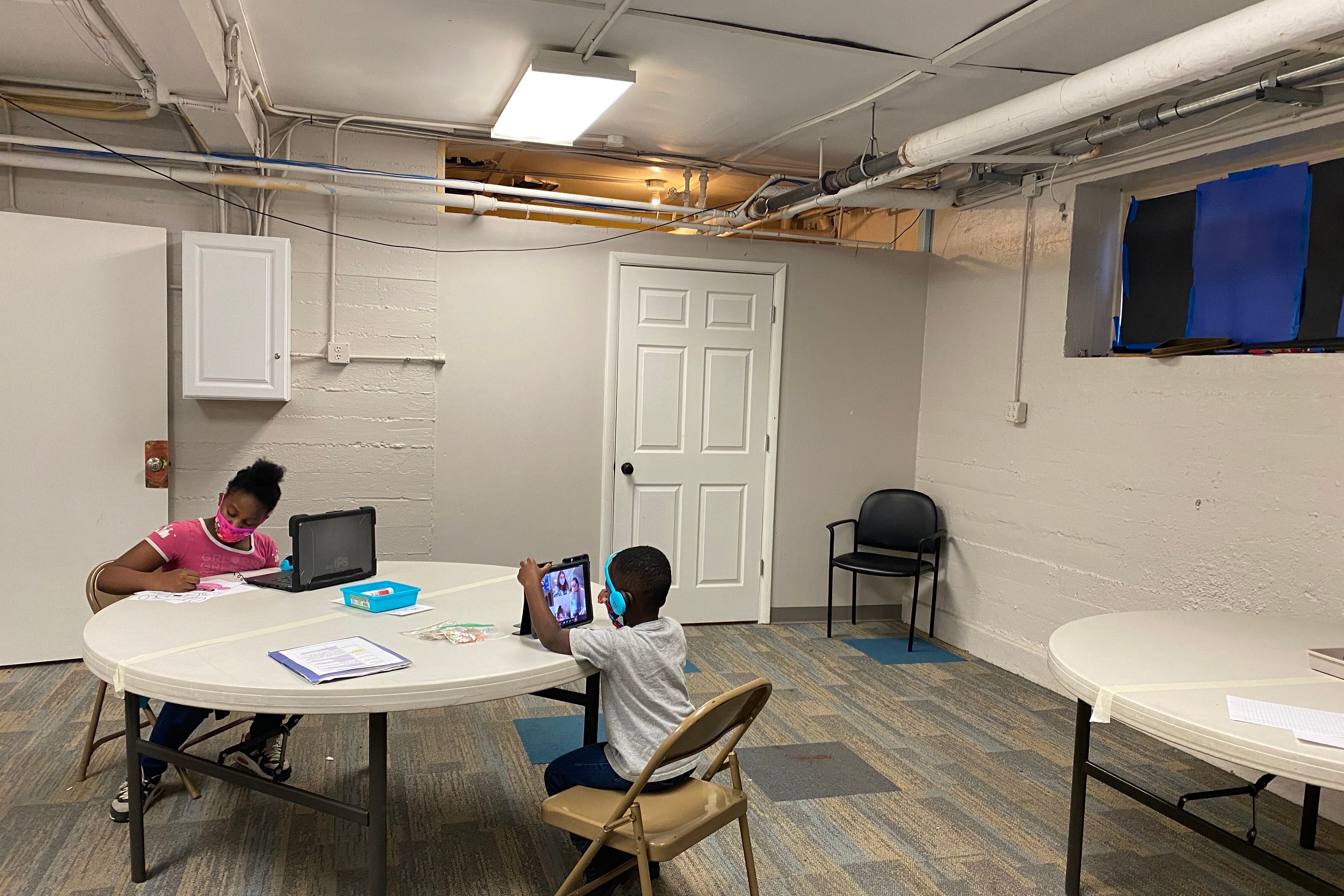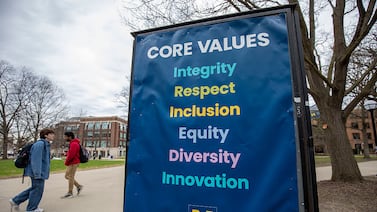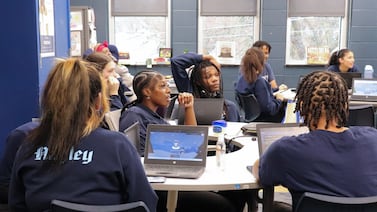A new state law limiting how much time students spend on virtual learning is pushing some Indiana districts to adjust how they handle snow days and professional development.
Effective next school year, the state will limit schools to three days of asynchronous instruction — defined as days when over half of instructional time is virtual and self-paced, without students spending any online time with a teacher. The law allows schools to use unlimited synchronous instruction, where teachers deliver lessons via video call to students who are at home.
The new law will likely mean adjustments for schools that have offered asynchronous learning to avoid calling off school, either for COVID threats or inclement weather, or to offer training for staff.
Lawmakers sought to crack down on districts they thought were relying too heavily on asynchronous days, when students don’t interact with teachers.
In the past five years, districts increasingly turned to virtual learning in lieu of canceling school, said Terry Spradlin, executive director of the Indiana School Boards Association. The COVID pandemic accelerated that trend as campuses closed for safety reasons or staff shortages, and as schools provided students and staff more devices and better technology to work remotely.
Spradlin characterized the new law as reasonable.
“There’s no dispute that the best instruction a student can receive is with their highly qualified teacher in the classroom,” he said.
Still, asynchronous instruction can be a quality option, and has been an attractive alternative to closing campuses for a traditional snow day, Spradlin said. The latter requires schools to make up the loss — but some doubt the effectiveness of summer makeup days.
“If you tack them on at the end of the year, it’s after students have taken final exams. Their coursework has been completed, they have spring fever, and they’re anxious to get out of school,” Spradlin said.
All school corporations in Indiana must offer 180 days of student instruction. The state exempts charter schools, Department of Education spokesperson Holly Lawson said.
Still, the new restrictions are not absolute. Schools can apply for waivers if they hold more than three asynchronous days due to “extraordinary circumstances,” according to an April memo from the department.
Reasons for virtual days
Not all schools in the state reported using virtual learning days this school year, but those that did cited both weather and COVID-related reasons. Indiana saw spikes in virus cases both at the beginning of the school year and in January as the omicron variant surged.
North White schools reported 14 days of virtual learning — seven due to a spike in COVID cases, Superintendent Nicholas Eccles said, and another seven due to weather issues.
All of the days were asynchronous, Eccles said. Next year, the district will plan to offer three asynchronous learning days, along with three days built into the calendar to make up for any school closures.
Any additional virtual learning needed will be synchronous, Eccles said.
Leaders of Portage Township schools, which reported 11 e-learning days this year, are discussing with teachers association representatives next year’s plans for virtual instruction.
“It is important to us that we adhere to this law while continuing to prioritize the worthwhile missions, such as staff professional development and weather-based at-home learning, that our e-learning days afforded us,” spokesperson Melissa Deavers-Lowie said.
Other issues such as bus driver shortages also have led schools to turn to virtual learning this year. Some e-learning days are pre-planned, used by districts like Elkhart and Hamilton Southeastern schools when teachers attend professional development.
The new state law prompted the district to cut those days from four to three, HSE spokesperson Emily Pace Abbots said.
The district has also built makeup days into its calendar in case of school day cancellations. If more than two days are lost, the district will turn to teacher-led virtual learning, Pace Abbotts said.
Spradlin of the school boards association said schools that have offered independent virtual learning for professional development may have to change course and return to previous practices of early dismissal or late arrival days instead.
To decide when to hold an asynchronous day, districts will have to consider meeting the calendar requirements, as well as whether all their students can access live, video instruction.
“For virtual synchronous, do students have connectivity? Have we issued a device? Can they sign on in real time?” Spradlin said. “Otherwise that would count as an absent day for underprivileged students. We wouldn’t want that.”
Aleksandra Appleton covers Indiana education policy and writes about K-12 schools across the state. Contact her at aappleton@chalkbeat.org.






